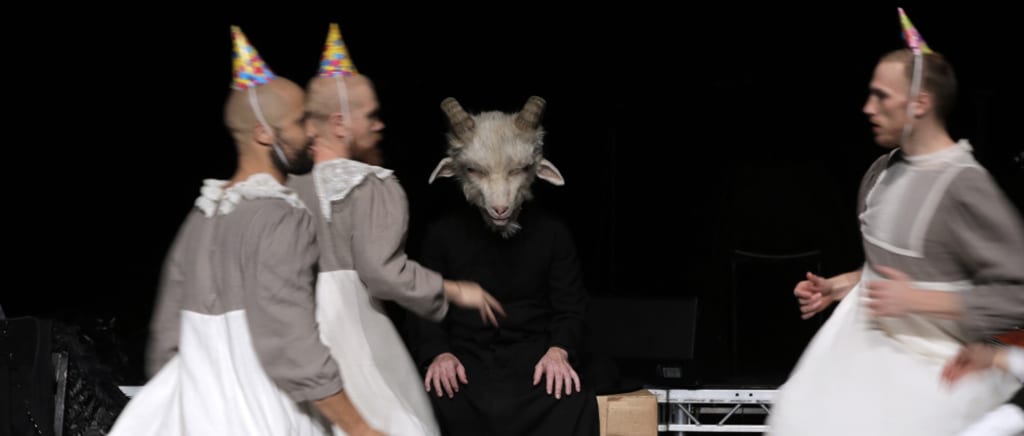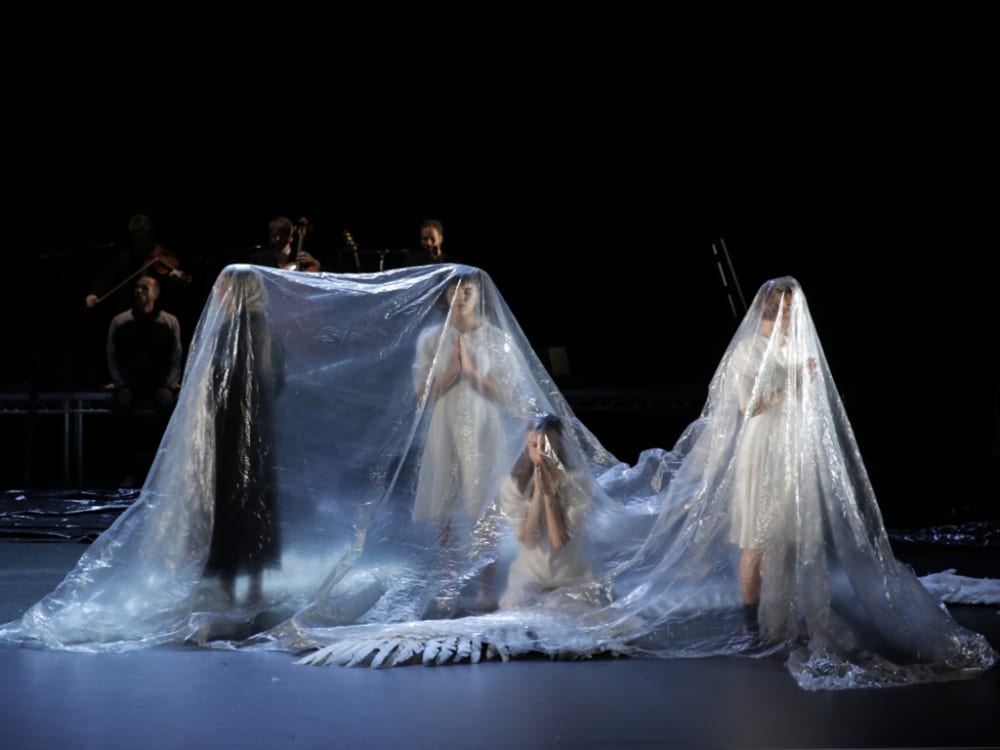This is total theatre and it doesn’t get better than this. If I could give it ten stars I would.
Not that everybody in the audience would agree. In the stalls if not elsewhere in the auditorium, I saw three separate couples and then an angry family spontaneously and disruptively flounce out. It was a protest, though not orchestrated. If they were expecting maidens in tutus and men in tights, they were certainly disappointed.
Tchaikovsky and Petipa’s 1895 ballet explored fin de siècle love’s tribulations and, covertly (as I see it, although presumably the flouncers-out would not concur), the fatal anxiety induced by having to deny homosexuality in a heterosexual society. Here, these issues are not the focus. Rather, the purport of “Loch na hEala” is that our whole moral world is deeply imperiled.
Keegan-Dolan and his superb team are master story-tellers. The audience’s noisy flouncers-out made their point when the starting gun for the new story-line was heard, namely the emotional and social consequences of sexual abuse perpetrated by the “godly man” who purports to provide a safe refuge from adversity. The plot soon broadens into an indictment of our self-serving society and its cruel politics.
In “Loch na hEala” there are no sylvan scenes or princelings in Bavarian castles. Three breeze blocks represent a house. A sheet of crumpled plastic is a lake. The classical ballet’s villain, Rothbart, is replaced by the “godly man” in the village. His evil trickery includes the brutal rape and murder of the Odette figure. Horror transfigures her and her sisters into terrified, defensive, broken creatures, half swan, half angel.
I had the good fortune to find myself sitting next to Irish investigative journalist Oonagh Smyth who tipped me off that “Loch na hEala” also makes reference to a well-known local scandal in Ireland in which the police, called to quieten a domestic fracas, over-reacted and shot someone dead. Keegan-Dolan works with the wider implications of this incident.
Some scholars say that the Russian classical ballet’s story-line was influenced by the life of Ludwig II of Bavaria, also known as the Swan King. His icon was the swan, he refused to marry, he was homosexual. In his last years he was dethroned on the grounds of his supposed insanity and he died in 1886 supposedly by accidental drowning but there is evidence that he was shot. Aside from the matter of sexuality, these events have an echo in Keegan-Dolan’s storyline.
The choreographer also makes use of the classical ballet’s points of coincidence with the Irish legend of the Children of Lir. In the legend there is a wicked step-mother whom Keegan-Dolan conjoins with Prince Siegfried’s mother, the Queen, in the classical ballet, except instead of a throne, Keegan-Dolan puts her in a wheelchair.
In the classical ballet the Queen insists that Siegfried choose a bride. She also gives him a bow and encourages him to go hunting for swans. In the Irish legend of the Children of Lir, the wicked step-mother cannot bear that her step-children love each other and love their father, so she turns them into swans. In the classical ballet’s story, a man’s true love can make Odette human again. In the Irish legend, the swans can become human again if they receive the blessing of a monk.
There lies the bitter irony in which Keegan-Dolan lodges the impetus for the tragedy of his own “Swan Lake”. The religious figure, far from providing succour and salvation, barely masks the evil lurking beneath and throughout society and politics there are corrupt forces of moral desecration. Nor can the love of the two lovers, as in the classical ballet, undo the evil around them.
The would-be lovers of “Loch na hEala” cannot love properly because they have been so traumatised by the sexual and emotional abuse to which they have been subjected. They will die at the end, at the mercy of destructive forces by now embedded in them, that they have no means to fend off. They die alone, separately, horribly.
In our times, the depredations of the past cannot be made to disappear magically. Even in death, there is no transfiguration, no union of souls.
One of the great achievements of this production, as in the best told folk tales, is that it never pretends that it is imitating life. Absorbed and concerned though we in the audience become, we are ultimately encouraged to know that we are at play, and when the play is done, we are left to think. Perhaps this was what Brecht was getting at. Whatever. This is art at its best.




